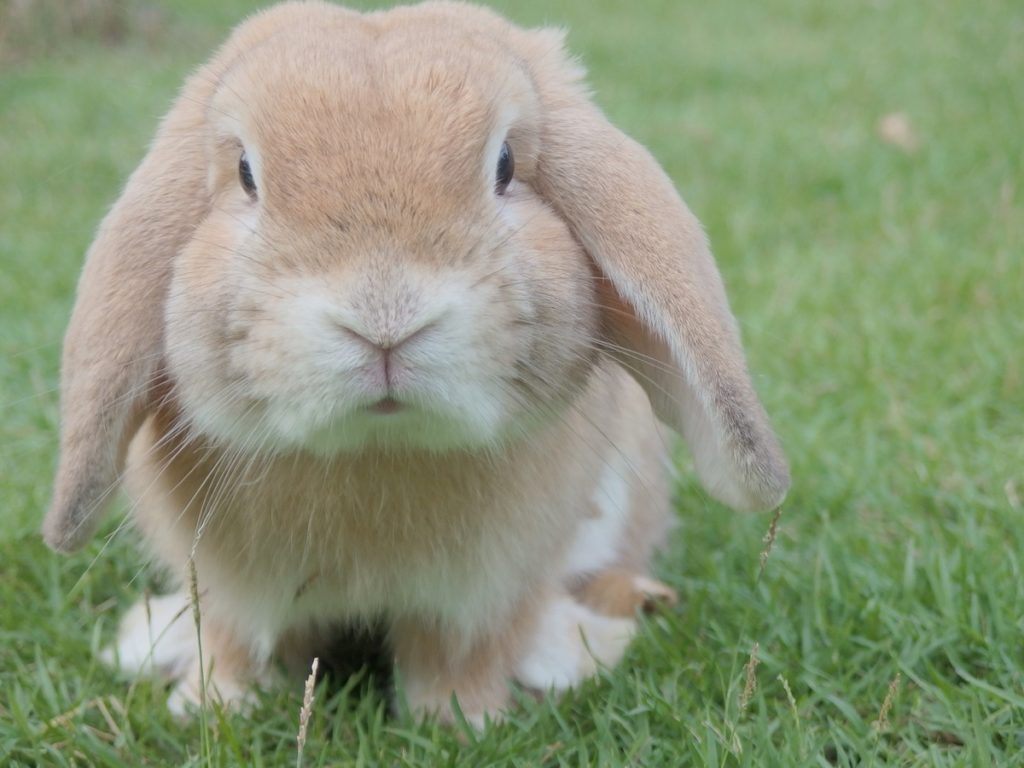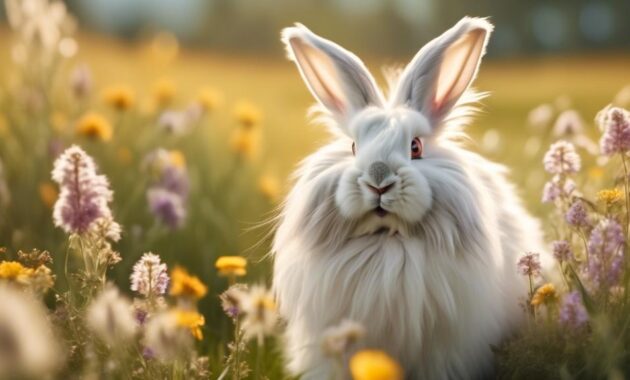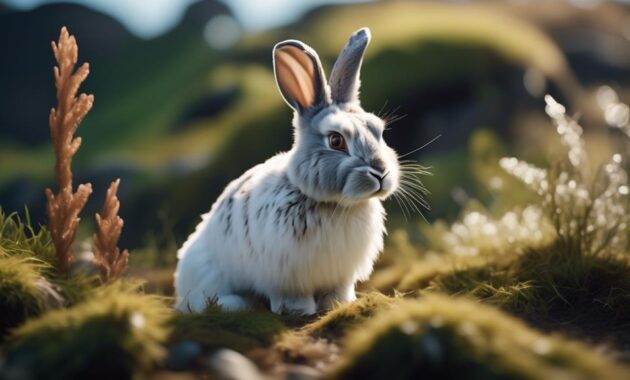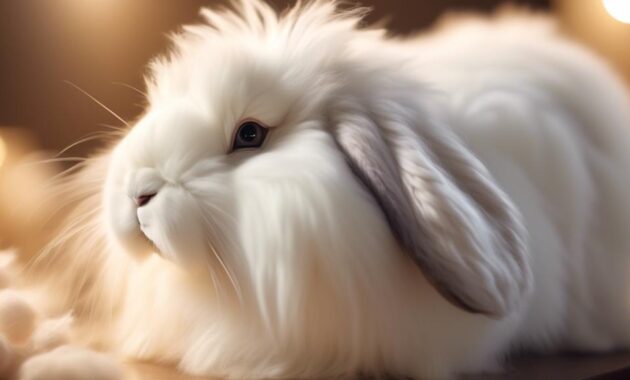
Are you skeptical about the idea of a rabbit breed with a unique body shape? Well, prepare to be amazed by the Himalayan Rabbit: the oldest breed that defies convention with its cylindrical form.
In this article, we will explore the intriguing characteristics and history of this extraordinary breed. From its origins in the Himalayan region to its distinctive appearance and gentle temperament, the Himalayan Rabbit has captured the hearts of rabbit enthusiasts for generations.
But that’s just the beginning – there’s so much more to discover about this fascinating breed. So, grab your curiosity and get ready to uncover the secrets of the Himalayan Rabbit.
Key Takeaways
- The Himalayan rabbit is one of the oldest rabbit breeds, with uncertain origins possibly from the Himalayan mountain area.
- It has a unique cylindrical body shape, sleek and slender appearance, and short and soft flyback fur that lies flat against its body.
- The Himalayan rabbit has a gentle and calm temperament, making it suitable for singles, seniors, and families with children.
- It requires a warm and sheltered environment, ample space to hop around and exercise, and safety precautions to ensure a hazard-free environment.
Weight and Lifespan of Himalayan Rabbits
Himalayan rabbits have an average weight of 2.5-5 lb and a lifespan of 5-8 years. These rabbits aren’t too heavy, making them easy to handle and care for. Their weight range allows them to be suitable for singles, seniors, and families with children.
With their gentle and calm temperament, they make great companions for both first-time owners and experienced rabbit enthusiasts. In terms of lifespan, Himalayan rabbits typically live for 5-8 years. It’s important to provide them with a proper diet and regular veterinary care to ensure they live a healthy and fulfilling life.
Cylindrical Body Shape of Himalayan Rabbits

The Himalayan rabbit is known for its unique cylindrical body shape. Unlike other rabbit breeds, the Himalayan rabbit has a distinct shape that sets it apart. Its body is long and tubular, with a sleek and slender appearance. This cylindrical shape gives the rabbit a graceful and elegant look.
The feet of the Himalayan rabbit remain flat on the surface even when stretched out, adding to its overall streamlined appearance. This body shape contributes to the rabbit’s agility and flexibility, allowing it to move swiftly and gracefully.
Whether hopping around or lounging in its enclosure, the cylindrical body shape of the Himalayan rabbit is truly captivating and adds to its charm and appeal.
Best Suited Environments for Himalayan Rabbits
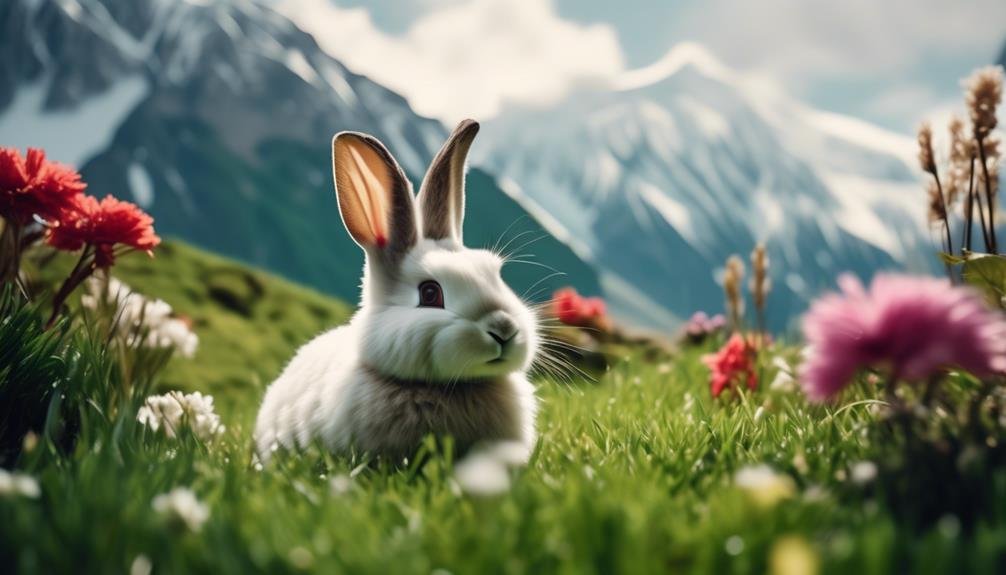
After learning about the unique cylindrical body shape of the Himalayan rabbit, it’s important to consider the best environments that are suited for these rabbits. Here are three factors to consider when creating the ideal environment for your Himalayan rabbit:
- Temperature: Himalayan rabbits are sensitive to cold temperatures, especially when they’re young. It’s essential to provide them with a warm and sheltered environment, whether it’s indoors or outdoors. Outdoor enclosures should be raised and protected from predators, while indoor enclosures should have wire with a plastic bottom for bedding.
- Space: Himalayan rabbits are generally small in size, weighing between 2.5 to 5 pounds. However, they still need enough space to hop around and exercise. Whether you live in an apartment or a house, make sure to provide them with ample space to roam and explore.
- Safety: Himalayan rabbits are gentle and docile, making them suitable for families with children. However, it’s crucial to ensure their safety by bunny-proofing your home and providing them with a secure enclosure. Remove any hazards or toxic plants from their environment, and supervise interactions between the rabbit and children to prevent any accidents.
Gentle and Calm Temperament of Himalayan Rabbits
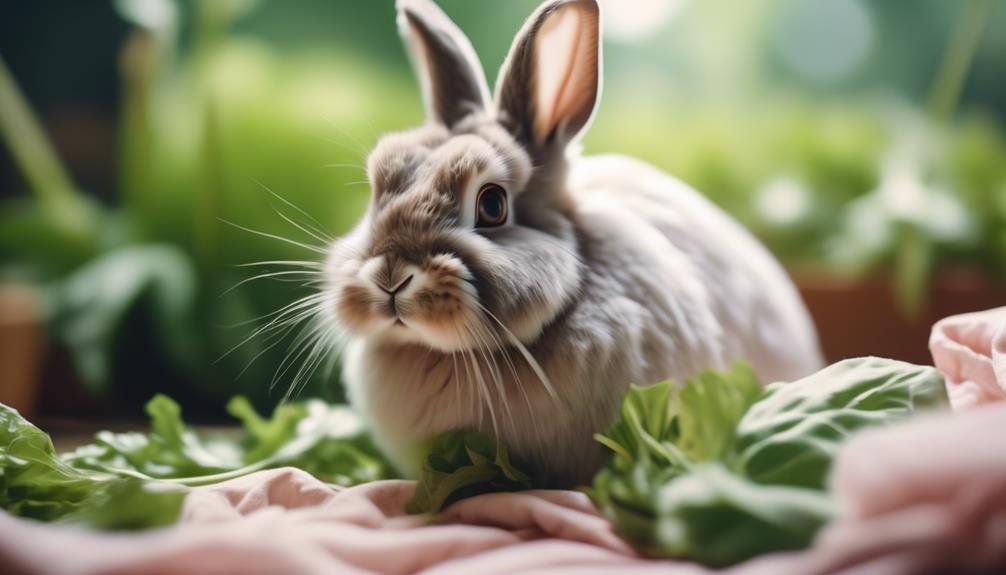
With their gentle and calm temperament, Himalayan rabbits are a joy to have as pets. They are known for their docile nature and make great companions for singles, seniors, and families with children. Here is a comparison table highlighting the gentle and calm temperament of Himalayan rabbits:
| Trait | Description |
|---|---|
| Friendliness | Himalayan rabbits are friendly and enjoy human companionship. They are known to be affectionate pets. |
| Calmness | These rabbits have a calm demeanor and rarely display aggressive behavior. They are easy to handle. |
| Playfulness | While they are generally calm, Himalayan rabbits can also be playful, especially during their active hours. |
Their gentle and calm temperament makes them suitable for first-time rabbit owners. They are also adaptable to different living environments, whether it be in an apartment or a house. Overall, Himalayan rabbits are a wonderful choice for those seeking a loving and peaceful pet.
Comparison With Californian Rabbits
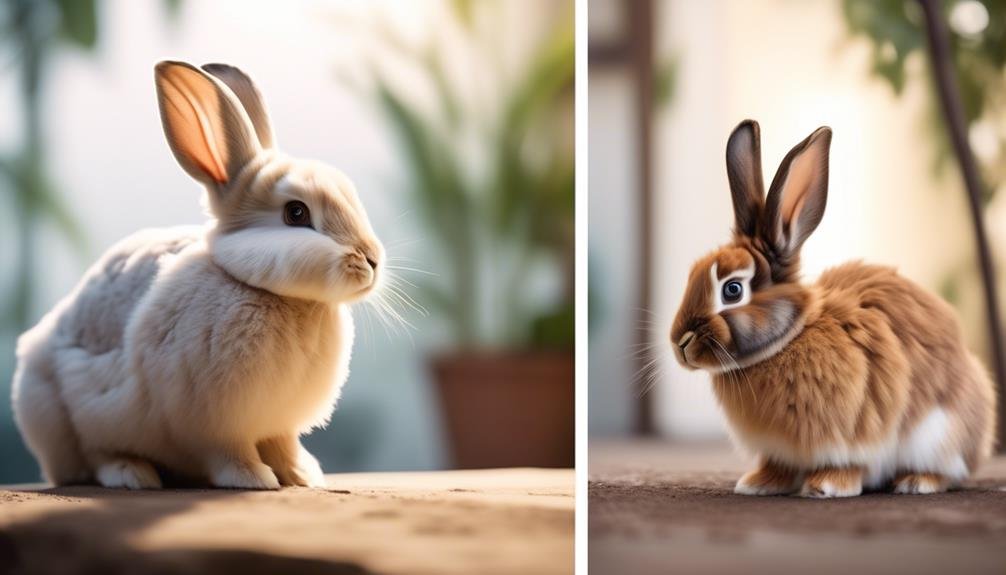
When comparing Himalayan rabbits to Californian rabbits, you’ll notice distinct differences in their appearance and markings.
- Coat Color – Himalayan rabbits have a white body with colored markings on their boots, nose, tail, and ears, while Californian rabbits have a white body with black markings on their nose, ears, feet, and tail.
- Body Shape – Himalayan rabbits have a unique cylindrical body shape, while Californian rabbits have a more compact and muscular body structure.
- Size – Himalayan rabbits are generally smaller, weighing between 2.5-5 pounds, while Californian rabbits are larger, weighing between 8-11 pounds.
These differences in appearance and size make Himalayan and Californian rabbits easily distinguishable from each other.
Whether you prefer the elegant markings of the Himalayan or the bold contrast of the Californian, both breeds offer their own unique charm.
Ancient Origins of Himalayan Rabbits

The ancient origins of Himalayan rabbits can be traced back to uncertain origins, possibly from the Himalayan mountain area. This breed is one of the oldest rabbit breeds known to mankind.
It first appeared in America in the early 1900s and has since been recognized by the American Rabbit Breeders Association (ARBA).
The Himalayan rabbit is known for its unique cylindrical body shape, with flat feet that remain on the surface even when stretched out. Its fur is short and soft, with a flyback texture.
The body is predominantly white, with colored markings on the boots, nose, tail, and ears. These markings come in various colors, including black, blue, chocolate, or lilac.
The exact details of their ancient origins may remain uncertain, but their distinctive body shape and gentle temperament continue to captivate rabbit enthusiasts worldwide.
Appearance and Markings of Himalayan Rabbits
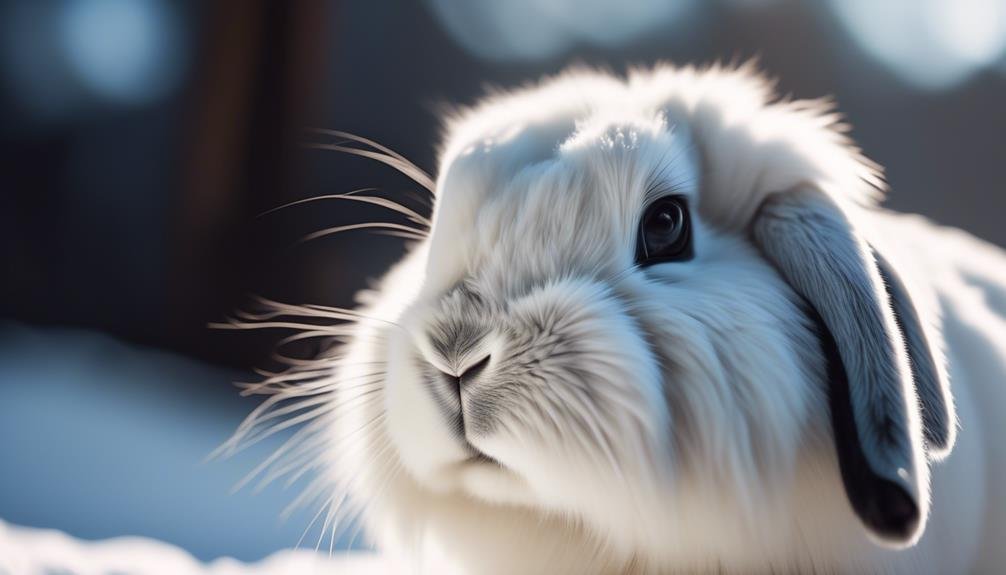
Himalayan rabbits are easily recognizable by their unique body shape and distinctive markings. Here are three key features that make them stand out:
- Cylindrical body shape: Himalayan rabbits have a distinct cylindrical body shape, which sets them apart from other breeds. Their bodies are long and slender, giving them an elegant and graceful appearance.
- Colored markings: While Himalayan rabbits have predominantly white fur, they also have colored markings on their bodies. These markings include boots on their feet, a colored nose, tail, and ears. The colors can vary and include black, blue, chocolate, or lilac, adding a touch of beauty and variety to their appearance.
- Flyback fur: Himalayan rabbits have short and soft flyback fur. This type of fur lies flat against their bodies and is smooth to the touch. It not only enhances their sleek look but also makes grooming and maintenance easier.
With their unique body shape and eye-catching markings, Himalayan rabbits are truly a sight to behold.
Unique Features of Himalayan Rabbit’s Body Shape

With their elongated and slender bodies, Himalayan rabbits possess a truly distinctive physique. Their unique body shape sets them apart from other rabbit breeds. Here are some of the notable features of their body shape:
| Feature | Description |
|---|---|
| Cylindrical Body Shape | Himalayan rabbits have a cylindrical body shape, which contributes to their elegant and elongated look. |
| Flat Feet | One interesting feature is that their feet remain flat on the surface even when stretched out. |
| Flyback Fur | They have short and soft flyback fur, which adds to their overall sleek appearance. |
These unique features give Himalayan rabbits a graceful and refined appearance. Their slender bodies and flat feet enhance their agility and elegance. The flyback fur adds a touch of softness to their overall appearance. These distinctive characteristics make Himalayan rabbits a visually captivating breed.
Care and Sensitivity to Cold for Himalayan Rabbits
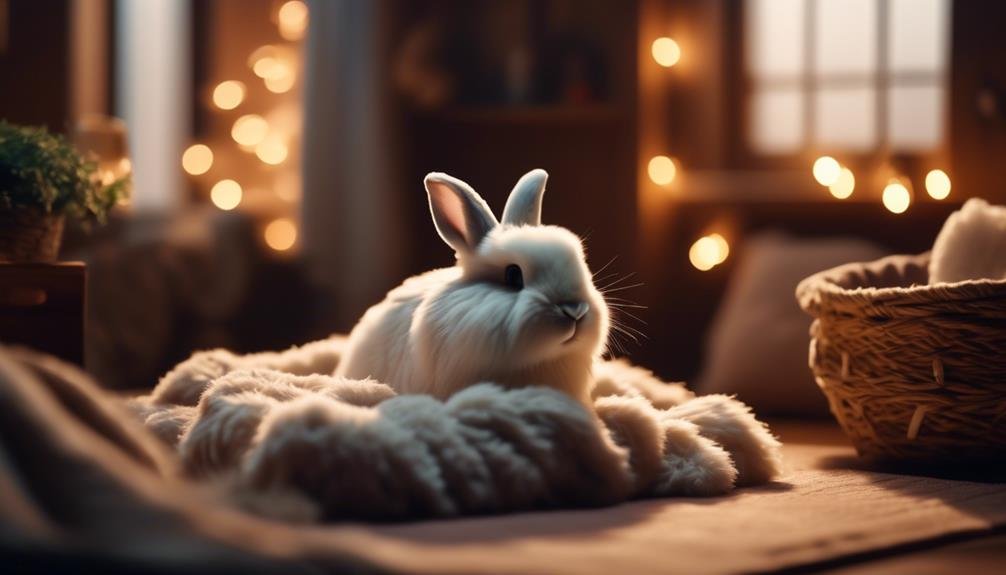
To ensure the well-being of your Himalayan rabbit, it’s important to consider their sensitivity to cold temperatures. These rabbits are more prone to feeling the cold, especially when they’re young. Here are three important care tips to help keep your Himalayan rabbit warm and comfortable:
- Provide proper shelter: Make sure your rabbit’s outdoor enclosure is raised off the ground and protected from predators. This will help prevent drafts and keep your rabbit safe from harm.
- Use suitable bedding: For indoor enclosures, use wire flooring with a plastic bottom to provide a warm and cozy resting area. This will help insulate your rabbit from the cold floor and provide comfort.
- Adjust their diet: During colder months, increase the amount of hay in your rabbit’s diet. Hay provides extra insulation and helps keep their body temperature regulated. Additionally, make sure they have access to fresh water at all times.
Outdoor and Indoor Enclosure Requirements
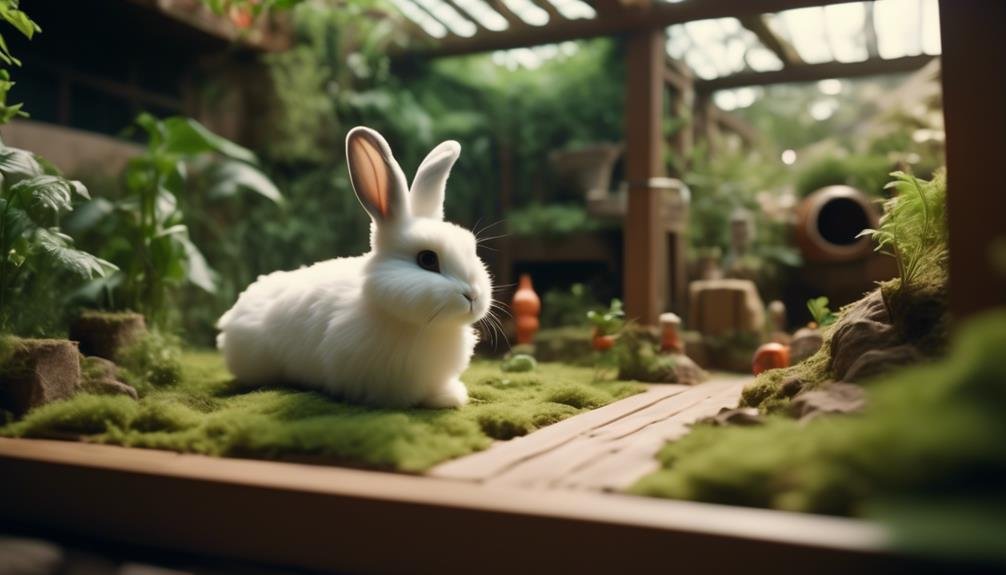
When creating an enclosure for your Himalayan rabbit, it’s important to consider both outdoor and indoor requirements.
For outdoor enclosures, it’s crucial to ensure that they’re raised and protected from predators. This can be achieved by using a secure fencing system and providing a roof or cover. Additionally, make sure to provide your rabbit with a sheltered area where they can seek refuge from harsh weather conditions.
Indoor enclosures should have wire walls and a plastic bottom for bedding. This will allow for easy cleaning and maintenance. It’s also important to provide ample space for your rabbit to hop around and exercise.
Remember to provide plenty of fresh hay, water, and a variety of fruits, vegetables, and pellets as part of their diet. Regularly check for any signs of mites, flystrike, or overgrown teeth to ensure the health and well-being of your Himalayan rabbit.
Dietary Needs for Himalayan Rabbits

To meet the dietary needs of your Himalayan rabbit, it’s important to provide a well-balanced and nutritious diet. Here are three key considerations for feeding your Himalayan rabbit:
- High-quality hay: Make sure that your rabbit has access to plenty of high-quality hay, which should make up around 70% of their diet. Hay helps to maintain healthy digestion and wear down their teeth, which continuously grow.
- Fresh fruits and vegetables: Supplement your rabbit’s diet with a variety of fresh fruits and vegetables. Offer leafy greens like kale or romaine lettuce, and introduce small amounts of fruits like apples or berries as a treat. Remember to introduce new foods gradually to avoid digestive upset.
- Pellets: Provide your Himalayan rabbit with a small amount of high-quality rabbit pellets daily. These pellets are specially formulated to meet their nutritional needs and should make up about 5% of their diet.
Regular Health Checks for Himalayan Rabbits

Regular health checks are essential for maintaining the well-being of your Himalayan rabbit. As an owner, you should schedule regular visits to the veterinarian to ensure that your rabbit is in good health. During these check-ups, the vet will examine your rabbit’s overall condition, including its body weight, fur quality, and dental health. They’ll also check for any signs of illness or parasites, such as mites or flystrike.
Additionally, the vet may trim your rabbit’s nails and offer guidance on proper nutrition and exercise. It’s important to stay vigilant and observe your rabbit’s behavior and eating habits at home. If you notice any changes or concerns, don’t hesitate to seek medical attention for your furry friend.
Grooming and Fur Maintenance for Himalayan Rabbits
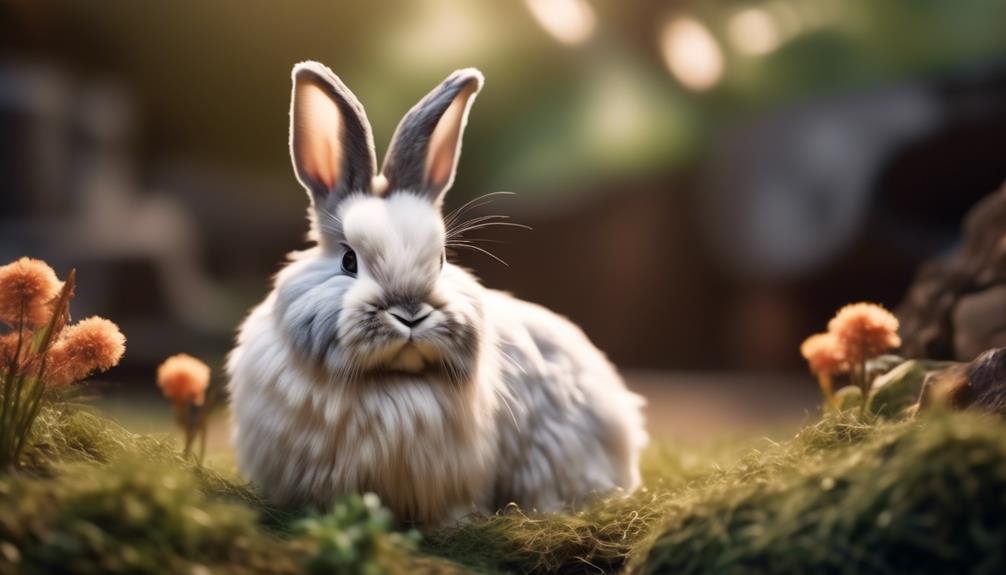
As you continue to ensure the well-being of your Himalayan rabbit, an important aspect to consider is the grooming and maintenance of their unique fur. Here are three key points to help you with grooming and fur maintenance for your Himalayan rabbit:
- Brush their fur regularly: Himalayan rabbits have short and soft flyback fur that requires regular brushing to prevent matting and to remove loose hair. Use a soft-bristled brush or a grooming glove to gently brush their fur, paying extra attention to areas with colored markings.
- Check for mites and fleas: Regularly inspect your rabbit’s fur for any signs of mites or fleas. Look for excessive scratching, redness, or small black dots on their skin. If you notice any signs, consult a veterinarian for appropriate treatment options.
- Keep their fur clean: Himalayan rabbits have white bodies with colored markings, so it’s important to keep their fur clean and free from stains. Spot clean any soiled areas with a damp cloth or a pet-safe wipe. Avoid using water unless necessary, as rabbits are sensitive to cold temperatures.
Training and Socialization Tips for Himalayan Rabbits

Training and socializing your Himalayan rabbit is essential for fostering a well-behaved and friendly companion.
Start by handling your rabbit gently and frequently from a young age to help them become comfortable with human interaction. Use positive reinforcement techniques, such as treats and praise, to reward desired behaviors like using the litter box or coming when called.
Consistency is key in training, so establish a routine and stick to it.
Socialize your rabbit by introducing them to different environments, sounds, and people. This will help them feel more at ease in new situations and prevent fear or aggression.
Remember to always supervise interactions with other animals and children to ensure everyone’s safety.
With patience and consistent training, your Himalayan rabbit will become a well-adjusted and sociable companion.
Tips for Choosing and Adopting a Himalayan Rabbit

When choosing and adopting a Himalayan Rabbit, consider their unique body shape and gentle temperament as key factors in finding the perfect companion. These tips will help you make an informed decision:
- Assess their body shape: Himalayan Rabbits have a distinctive cylindrical body shape, with feet that remain flat on the surface even when stretched out. This unique feature sets them apart from other breeds and adds to their charm.
- Consider their temperament: Himalayan Rabbits are known for their gentle, docile, and calm nature. They make excellent companions for singles, seniors, and families with children. Their easy-going temperament makes them suitable for first-time rabbit owners as well.
- Research their care requirements: Before bringing a Himalayan Rabbit home, familiarize yourself with their specific care needs. This includes providing a suitable living environment, a balanced diet, and regular health check-ups.
Frequently Asked Questions
What Are the Grooming and Fur Maintenance Requirements for Himalayan Rabbits?
To maintain your Himalayan rabbit’s fur, brush it gently once or twice a week. Pay attention to their ears, tail, and feet, as these areas can collect dirt. Trim their nails regularly, and check for any signs of mites or other skin issues.
How Should Himalayan Rabbits Be Trained and Socialized?
To train and socialize your Himalayan rabbit, start by handling them gently and frequently. Introduce them to new people and environments gradually. Use positive reinforcement techniques like treats and praise to encourage good behavior.
What Are Some Tips for Choosing and Adopting a Himalayan Rabbit?
When choosing and adopting a Himalayan rabbit, consider their unique body shape, gentle temperament, and sensitivity to cold. Provide a raised outdoor enclosure or wire indoor enclosure with proper bedding. Maintain a balanced diet and regular health check-ups.
Are There Any Specific Health Concerns or Conditions That Himalayan Rabbits Are Prone To?
Himalayan rabbits are prone to sensitivity to cold, mites, flystrike, and overgrown teeth. Regularly check for these health concerns and provide proper care, such as raised outdoor enclosures and a balanced diet, to keep them healthy.
How Do Himalayan Rabbits Interact With Children and Other Pets?
Himalayan rabbits are gentle and calm, making them great companions for children and other pets. They interact well with kids and can adapt easily to a household with other animals, bringing joy and fun to the whole family.
How Does the Unique Body Shape of Himalayan Rabbit Compare to the Enormous Size of Continental Giant Rabbit?
The unique body shape of the Himalayan rabbit sets it apart from the majestic Continental Giant rabbit. The Himalayan rabbit is smaller and more compact, while the Continental Giant rabbit is known for its enormous size. The two breeds exhibit distinct physical characteristics, making each one special in its own way.
Conclusion
In conclusion, the Himalayan Rabbit is a truly unique and ancient breed that captures the hearts of rabbit enthusiasts worldwide.
With its distinctive cylindrical body shape and gentle temperament, it’s well-suited for individuals and families of all ages.
Whether you choose to keep it indoors or outdoors, this breed thrives in various environments.
With proper care, regular health checks, and grooming, the Himalayan Rabbit will continue to be a beloved companion for many years to come.

